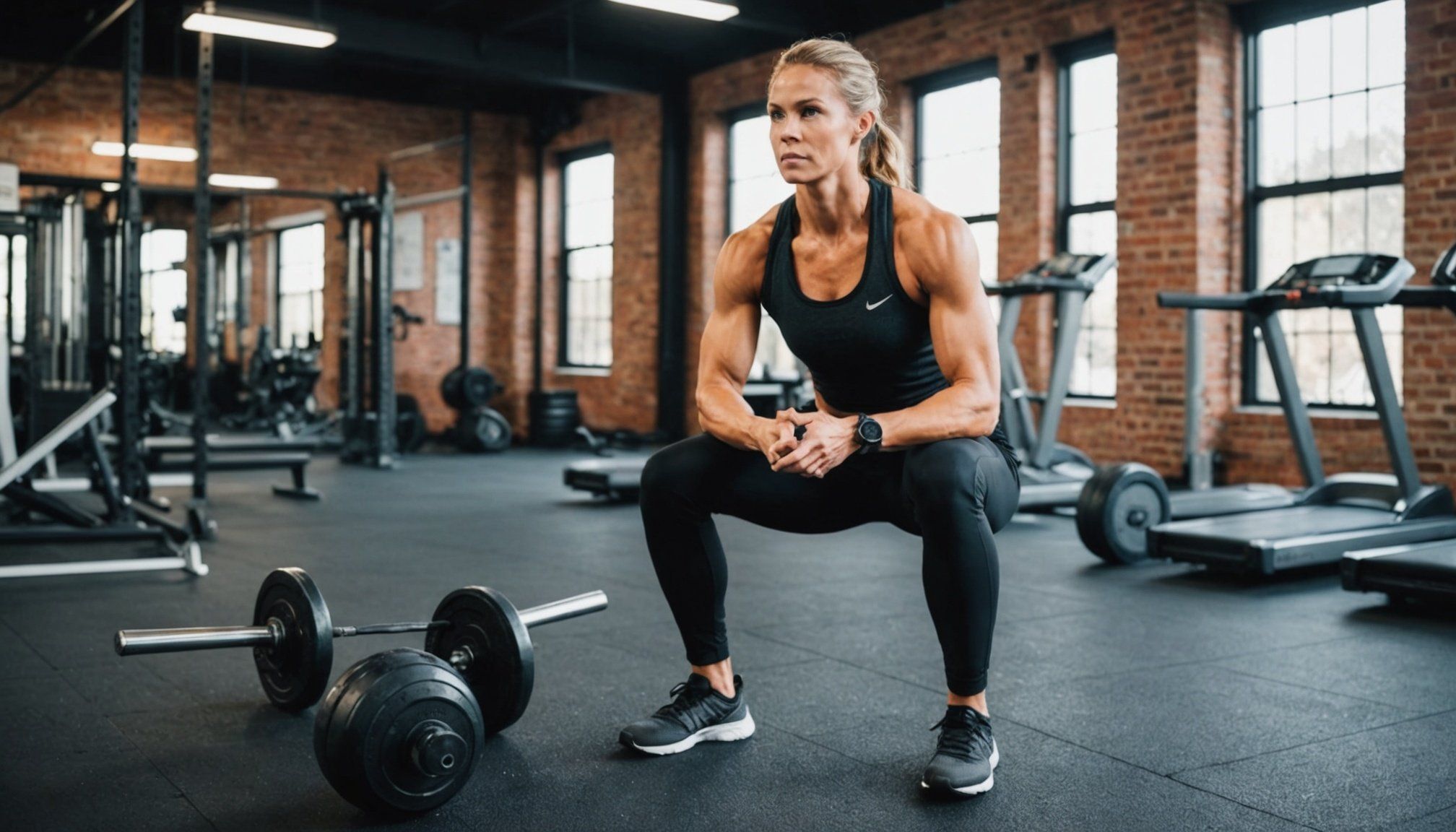Innovative Training Techniques
To enhance athletic skills, training methods have evolved significantly. These cutting-edge methodologies are pivotal in optimizing performance enhancement for athletes. Traditional routines have been transformed with the integration of advanced technology. Techniques such as motion capture and virtual reality provide real-time feedback, allowing athletes to adjust techniques promptly for maximum efficiency.
Numerous athletes have successfully embraced these innovative training methods. For instance, professional sprinters incorporate biomechanical analysis to perfect their form, reducing injury risk while maximizing speed. Similarly, technology-enabled resistance training has become a staple for powerlifters looking to break personal records.
In the same genre : Mastering Pro-Level Training: Essential Tips You Must Know
Furthermore, wearable tech has reshaped training routines. Devices that monitor biometrics like heart rate variability are instrumental in customising training loads, ensuring that athletes push limits safely. These training methods not only enhance physical abilities but also refine tactical awareness in competitive sports.
Real-life examples illustrate this shift. CrossFit enthusiasts utilise data-driven plans to streamline workouts, aligning efforts with individual goals. As innovation continues to drive performance enhancement, athletes are better equipped to achieve superior results, illustrating the profound effects of merging technology with traditional training methods.
Also read : Pivotal Sporting Events Revolutionizing the Future of the Industry
Nutrition for Peak Performance
Fueling athletic performance begins with optimizing sports nutrition. Athletes seeking to enhance endurance and strength must prioritize key nutritional strategies. Recovery foods play a crucial role in energy replenishment. During training, athletes require a diet rich in carbohydrates, proteins, and healthy fats to sustain energy levels. Proteins are essential for muscle repair and recovery, while carbohydrates act as the primary energy source.
Energy optimization isn’t solely about food intake; supplements can be valuable allies. Essential supplements such as creatine, branched-chain amino acids (BCAAs), and omega-3 fatty acids contribute significantly to performance. Creatine is renowned for improving strength and increasing lean muscle mass.
Case studies in sports nutrition reveal profound impacts on athletic achievements. For example, endurance athletes incorporating nutrient-dense, balanced diets frequently report improved performance and reduced recovery times. Similarly, strength athletes emphasize the importance of protein-rich post-workout meals to support muscle growth.
In conclusion, understanding and adhering to nutrition strategies enable athletes to harness their full potential, ensuring that their bodies are well-equipped to meet the rigorous demands of their sports. Being mindful of dietary choices can dramatically enhance an athlete’s performance and overall success.
Effective Recovery Strategies
Successful sports performance isn’t just about rigorous training; effective recovery techniques are quintessential for athletes aiming for performance longevity. These strategies are integral in avoiding burnout and maintaining peak athletic ability.
Injury prevention is a cornerstone of effective recovery. For instance, incorporating stretching routines and foam rolling into daily schedules can preemptively address muscle stiffness, significantly reducing the risk of injuries. But recovery isn’t solely about physical practices; it’s about embracing holistic habits.
Rest and hydration are often understated yet crucial recovery components. A study involving elite marathoners highlights that inadequate rest delays muscle repair, hindering performance. Similarly, maintaining optimal hydration, especially after intensive workouts, ensures the body efficiently replaces fluids and electrolytes lost during exertion.
Top athletes are increasingly employing tailored recovery programs. For example, professional basketball players use cryotherapy to expedite muscle regeneration after back-to-back games. Furthermore, sleep has emerged as an invaluable recovery facet, with evidence suggesting that a regular 8-hour sleep cycle underpins sustained performance levels. Overall, these insights demonstrate that a well-rounded approach to recovery fosters endurance, mitigates injury risks, and ultimately enhancess athletic success.
Mental Resilience and Focus
Enhancing mental resilience is as crucial as physical conditioning for athletes. Developing psychological strategies can be a game changer. Techniques like visualization allow athletes to mentally rehearse their performance, boosting confidence and focus. For example, elite swimmers often visualize their race moments before hitting the water, sharpening their focus and decreasing performance anxiety.
Meditation practices are another effective tool. They enhance focus improvement by cultivating mindfulness, reducing stress, and improving concentration. Basketball players, for instance, use meditation to stay grounded during intense matches, resulting in consistent performance under pressure.
Examples of athletes leveraging these practices abound. Tennis stars like Novak Djokovic credit mental training significantly for their on-court success, highlighting its role in maintaining composure during high-stakes tournaments. Moreover, adopting a robust mental training routine not only bolsters focus but also fosters an athlete’s ability to adapt to rapidly changing scenarios during competitions. This psychological edge can distinguish top-tier competitors from the rest, making mental training an indispensable aspect of achieving athletic excellence. Emphasizing these techniques invites athletes to pursue mental fortitude, which often mirrors their physical prowess.
Coaching and Support Systems
In the complex journey of athletic development, having dedicated coaching advice has become indispensable. Coaches offer tailored guidance that helps athletes harness their full potential, fostering skills and addressing weaknesses. A coach’s role goes beyond instruction; they act as motivators, helping athletes navigate both physical and mental hurdles.
The importance of mentorship in sports cannot be understated. A mentor provides a sounding board for athletes, offering insights derived from experience. They facilitate personal growth, encouraging athletes to pursue challenges confidently and strategically. This relationship is crucial in laying the groundwork for long-term success in sports.
Training support from peers also plays a pivotal role. Athletes thrive in environments where support and camaraderie are prevalent. Training communities foster healthy competition, pushing individuals to exceed their limits while ensuring they have a network to rely on for emotional and practical support.
Successful athletes often attribute their triumphs to robust support systems. For instance, Olympic champions frequently highlight their coaches’ and peers’ unwavering support as fundamental to their achievements. These relationships are central to nurturing talent and sustaining success throughout an athletic career.
Injury Prevention and Management
Effective injury prevention is paramount for athletes aiming to sustain peak performance levels. A significant component of mitigating injury risks involves targeted rehabilitation techniques. Techniques such as regular physiotherapy and tailored stretching regimes can significantly reduce the likelihood of injury by preparing the body for intense exertions.
Athletes also employ physical therapy methods, such as mobility exercises, to maintain joint health and improve flexibility. For instance, incorporating yoga or Pilates into training routines has proven beneficial in preventing muscular imbalances and maintaining alignment, essential for injury avoidance.
When injuries do occur, effective rehabilitation techniques are crucial for a swift recovery. Physical therapy plays a pivotal role here, utilising practices like hydrotherapy and electromyostimulation. These methods accelerate healing, ensuring athletes can return to training quicker while maintaining performance.
Real-life stories underscore these strategies’ effectiveness. Professional athletes often credit their comeback successes to comprehensive rehabilitation and physical therapy programs. For example, after a severe ACL injury, a football player might undergo an extensive rehabilitation process, demonstrating that resilience and strategic management can lead to successful returns to competitive sport.











